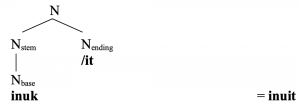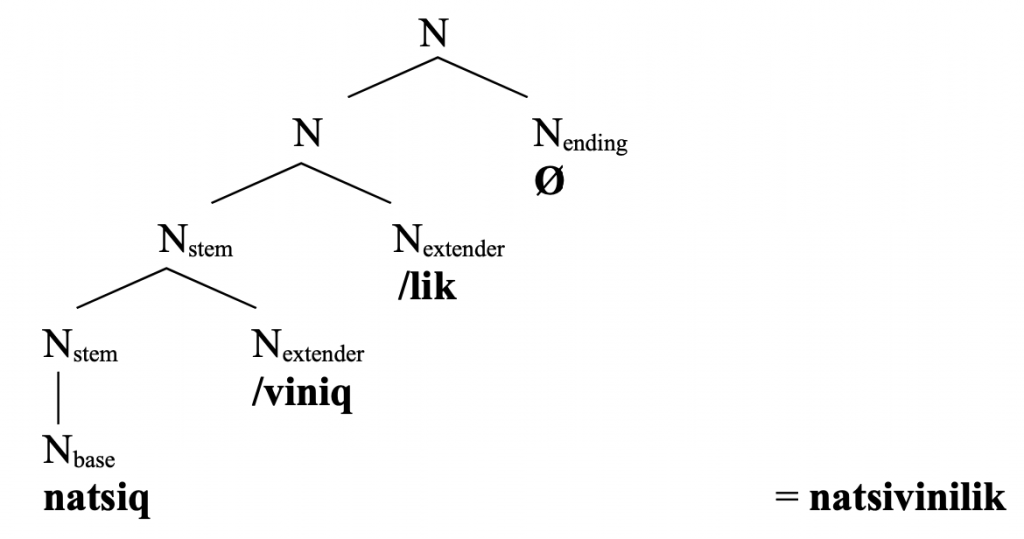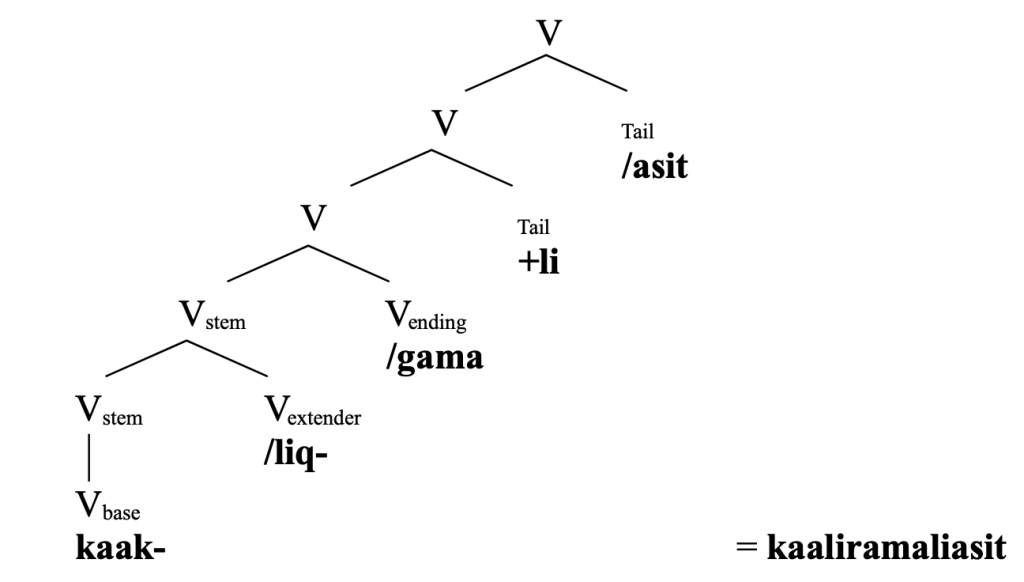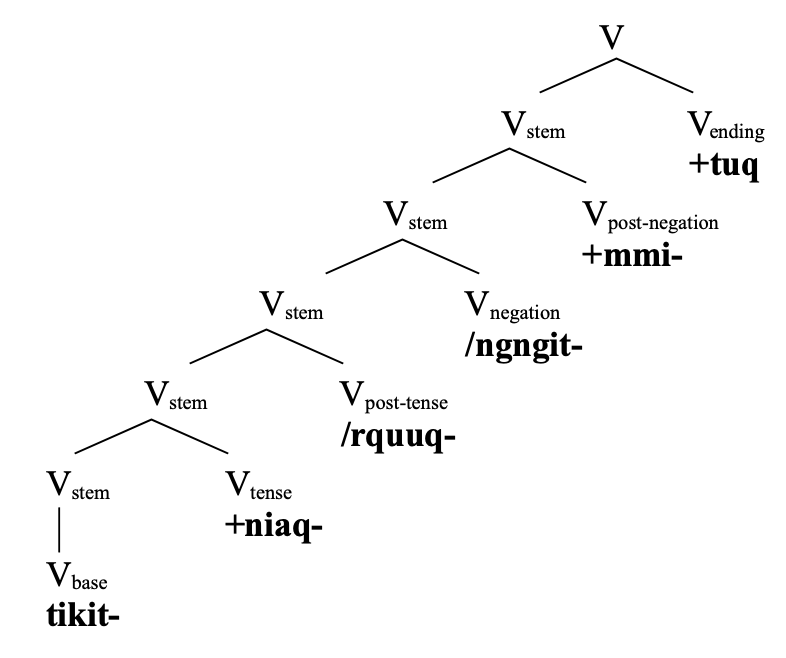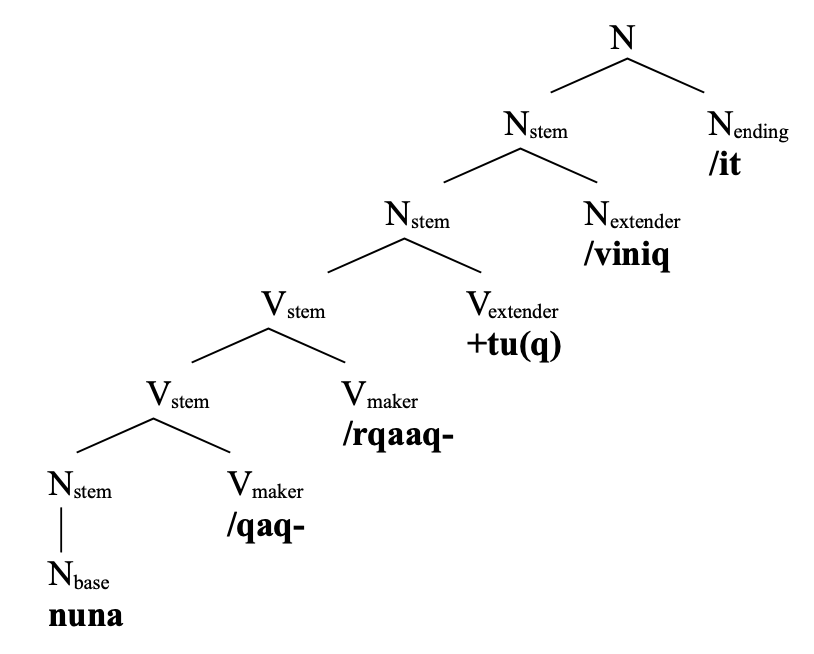Rule #24
Nouns and verbs
- are always chunkable,
- always begin with one (and only one) base,
- always contain one (and only one) ending,
- may contain one or several posbases between the base and the ending, ▪ may end with one or two tails after the ending.
Examples
- ᓄᓇᖃᕐᖄᑐᕕᓃᑦ
nunaqarqaatuviniit
nuna-qa-rqaa-tu-vini-it

- ᓇᑦᓯᕕᓂᕐᑐᕈᒪᕗᖓᓕ
natsivinirturumavungali
natsi-vinir-tu-ruma-vunga-li

We know that there are different types of bases and different types of endings. There are also different types of postbases:
- Noun makers: +ti, +vik, /giaq, …
- Noun extenders: +miuq, /viniq, /aaluk, …
- Verb makers: /liaq-, +siuq-, /qaq-, …
- Verb extenders: /guma-, /gasuk, /gunnaq-, …
- Tense postbases: /lauq-, /rqau-, /langa-, …
- Post-tense postbases: /rquuq-, …
- Negation postbases: /ngngit-, …
- Post-negation postbases: +mmi-, …
In order to understand how these different types of chunks are combined into words, we need to introduce two new notions.
First, the notion of scope.
Within a word, the scope of a chunk is the part of the word over which the meaning of the chunk operates.
The linear order of chunks correlates with their scope: postbases with a more narrow scope appear closer to the base than postbases with a less narrow scope.
Here is the rule to remember:
A chunk has scope over everything to the left in the same word.
Example
In the noun nuna-qa-rqaa-tu-vini-it,
/it has scope over nuna-qa-rqaa-tu-viniq,
/viniq has scope over nuna-qa-rqaa-tuq,
+tu(q) has scope over nuna-qa-rqaaq-,
/rqaaq- has scope over nuna-qaq-,
/qaq- has scope over nuna.
Scope relations can be represented in a number of ways:
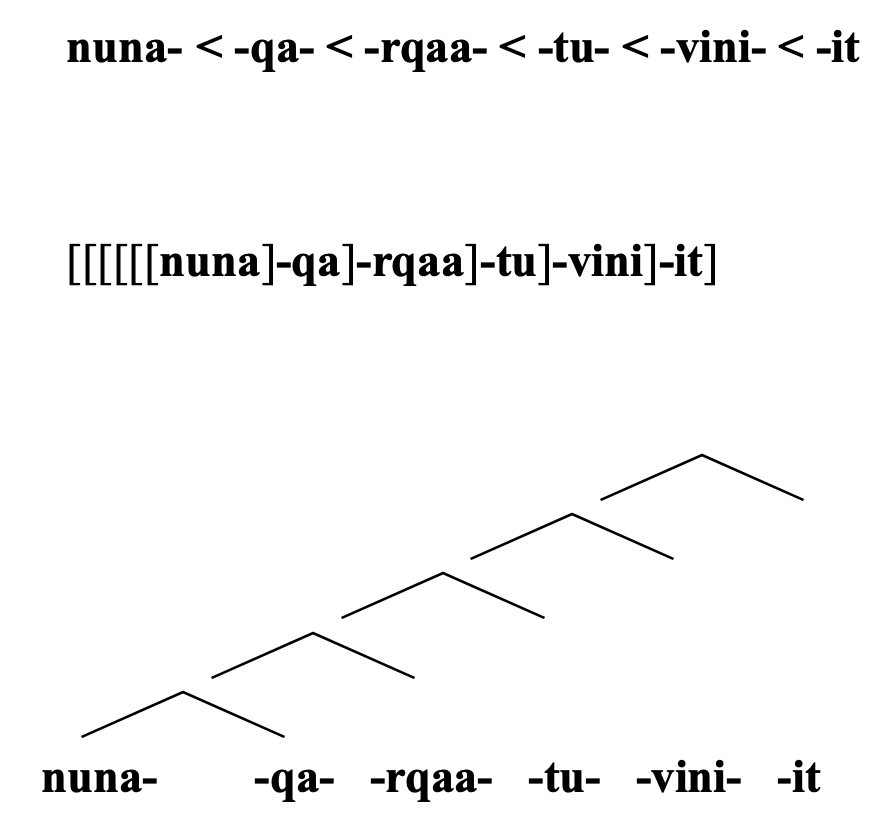

In English, scope relations are reversed with respect to Inuktitut.
This is why the order of chunks is often the mirror-image of the order of words in the English literal translation:
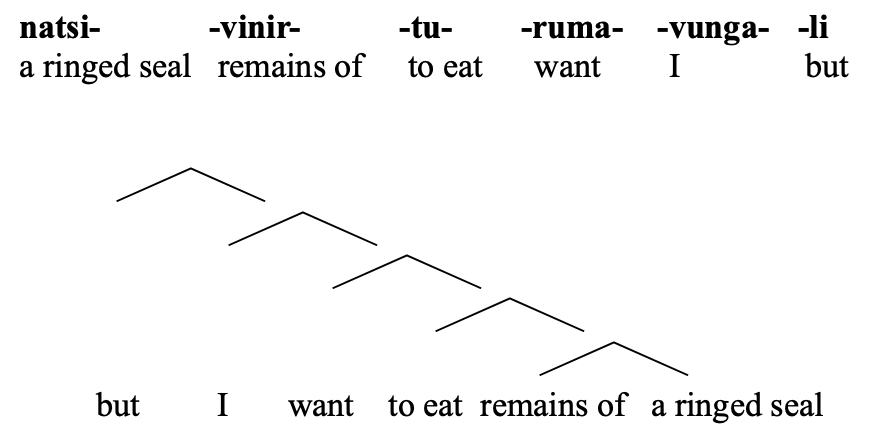
It is most often impossible to change the order of postbases in a word. When it is possible, the meaning of the word also changes.
Examples
- natsi-vini-lik ≠ natsi-li-viniq
(there is some seal meat) ≠ (there used to be a seal)
- nanu-alu-lik ≠ nalu-li-aluk
(there is a big polar bear) ≠ (there are many polar bears)
Then, we need to introduce the notion of stem.
A stem is a word part that
- consists of one or more chunks,
- begins with a noun base or a verb stem, and
- requires an ending to become a complete word form.
These are the general rules for building nouns and verbs in Inuktitut:

Examples


Recursive types of postbases are underlined.
Extenders are highly recursive. Up to five extenders can be encountered successively.
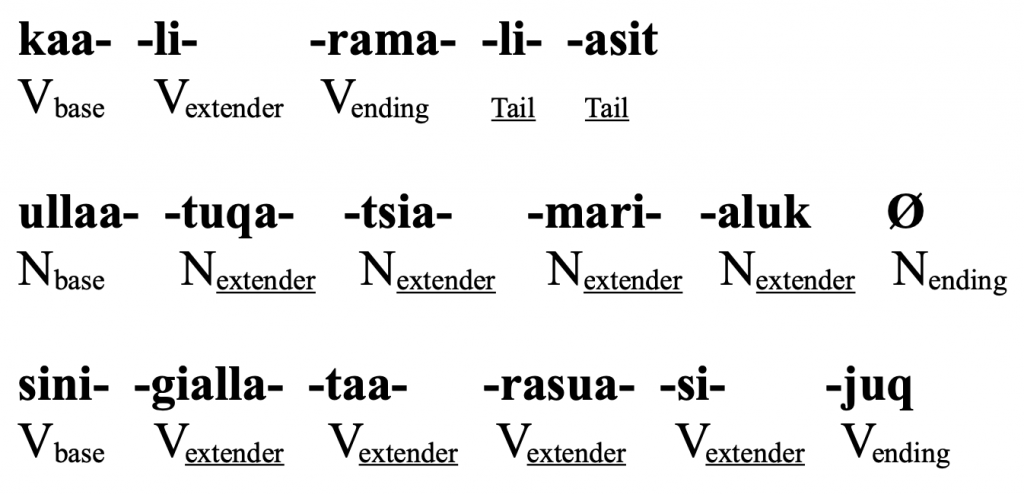
Post-tense and post-negation postbases are few, but some of them are frequent:

A handful of postbases make exceptions to the rules stated above.
- Verb maker /it- always adds to a noun in the locative case.
- Verb maker /uq- always adds to a noun in the allative, translative or simulative case.
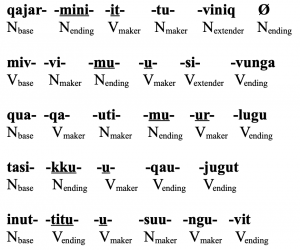
Verb extenders +turi-, +niraq-, /guma- and /ujaq- may follow a tense postbase:
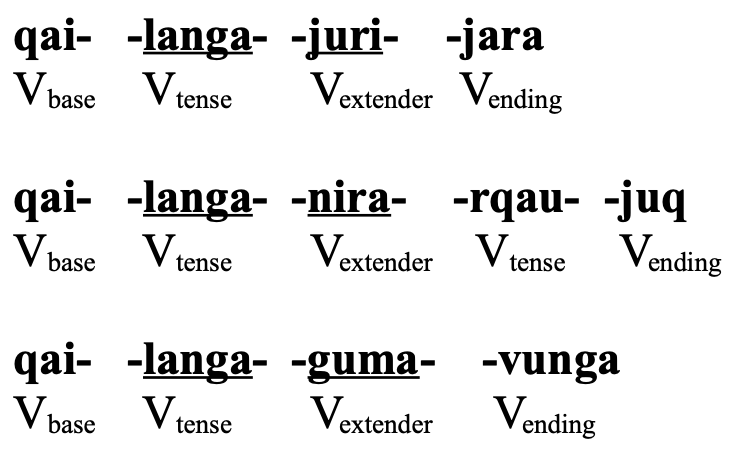
Note that Inuktitut has many homophonic postbases: apparent exceptions may not be real. For example, /lauq- can be found to the right of /ngngit-. In this case, /lauq- is not a tense postbase, but a post-negation postbase indicating politeness.
